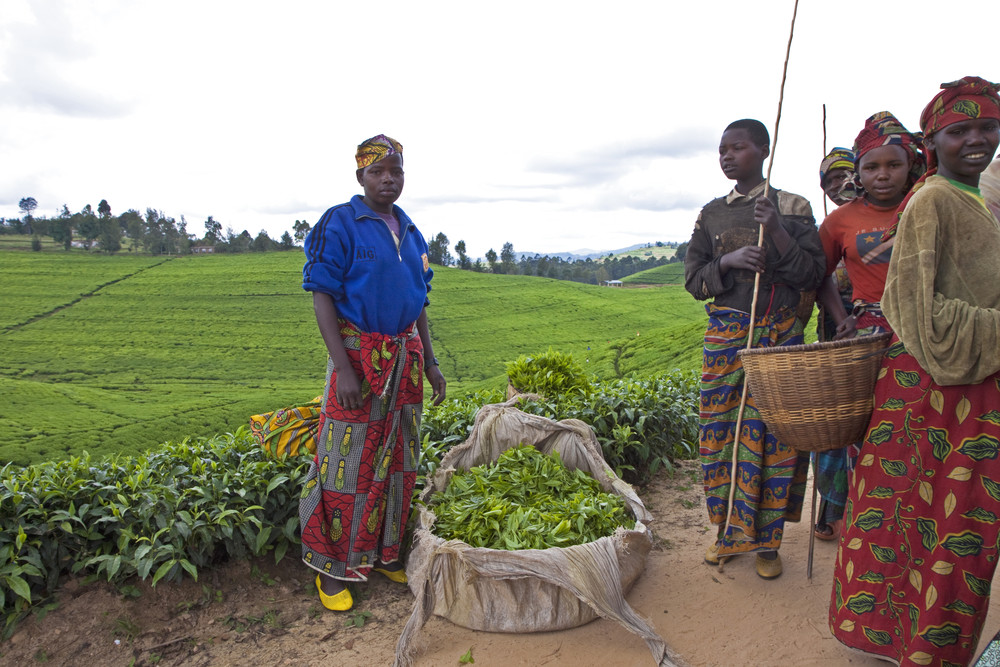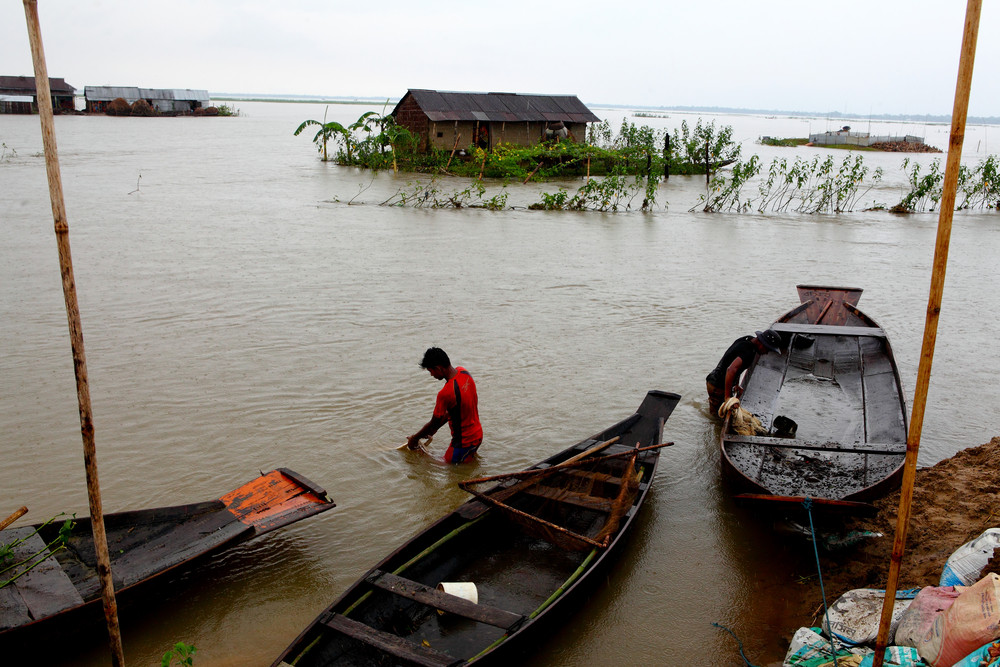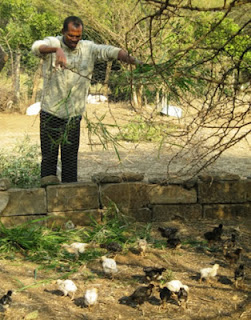Interviews with IFAD Country Program Managers highlight the context of rural poverty in Latin America and the Caribbean
Argentina
Paolo Silveri is IFAD's Country Program Manager for Argentina. In this interview, he takes us to Argentina to learn about policy dialogue, the context of rural poverty in this G20 nation and how IFAD is funding new opportunities and innovative approaches for family farmers.
Brazil
IFAD's Country Program Manager for Brazil, Iván Cossio, highlights the Brazilian experience. Along the way, we learn more about the specific context of rural poverty in this emerging economy, and how investment in social equity and citizenship can help poor rural people to overcome poverty. We also learn about innovative IFAD-funded projects designed to tackle issues of climate change, knowledge management, market access and more.
Colombia
Colombia is a country with vast opportunities and myriad challenges. In this interview with IFAD's Country Program Manager for Colombia, Roberto Haudry, we learn how tapping rural talents, investing in productive resources and citizenship, and ensuring long-term rural development and risk management can work toward peace and sustainable poverty reduction.
Ecuador
Take a look at the political, social and economic context that frames rural poverty in Ecuador in this interview with IFAD's Country Program Manager for Ecuador, Francisco Pichón. There's some interesting insights on long-term solutions through IFAD funding.
Guatemala
Joaquin Lozano is IFAD's Country Program Manager for Guatemala. In this interview, he underlines the innovations in private-public partnerships in Guatemala, which have allowed family farmers to access some of the world's largest markets.
Guyana
Esther Kasalu-Coffin, IFAD's Country Program Manager for Guyana, highlights IFAD's country program for Guyana, giving in-depth analysis of how IFAD funding is reaching marginalized groups, targeting interventions and working to provide lasting solutions to enable poor rural people to overcome poverty.
Haiti
In this incisive interview, IFAD Country Program Manager Marco Camagni looks at the context of rural poverty in the Western Hemisphere's poorest country, highlighting risk mitigation, the role of women, environmental stewardship and how IFAD funding is working to create new opportunities.
Nicaragua
In this video IFAD Country Program Manager for Nicaragua, Ladislao Rubio, shows us how innovations in funding for rural micro-enterprise development are making a difference in Nicaragua.
Paraguay
Discover the context of rural poverty in Paraguay - and the way out - with this engaging interview with Paolo Silveri, IFAD Country Program Manager for Paraguay. Along the way, you'll learn how strengthening value chains, protecting the environment and improving market access can help poor rural people in Paraguay to overcome poverty.
Peru
In this in-depth interview, IFAD's Country Program Manager for Peru, Roberto Haudry, looks at the various mechanisms for social inclusion, citizenship and rural poverty reduction in the country, also giving an overview of IFAD's funding and how new innovative methods can work to ending rural poverty.
Venezuela
Francisco Pichón, IFAD's Country Program Manager for Venezuela, highlights the political context of rural poverty reduction in Venezuela, looking at IFAD's funding portfolio, new initiatives to empower marginalized groups and the specific challenges for sustainable poverty reduction in Venezuela.
Environment
Jesus Quintana is the Environment and Climate Specialist for IFAD's Latin America and the Caribbean Division. In this incisive interview, Jesus underlines the challenges facing the region, looking toward innovative solutions and ways in which IFAD is tackling climate change and environmental issues as part of its ongoing strategy to enable poor rural people to overcome poverty.
Share it!
Argentina
Paolo Silveri is IFAD's Country Program Manager for Argentina. In this interview, he takes us to Argentina to learn about policy dialogue, the context of rural poverty in this G20 nation and how IFAD is funding new opportunities and innovative approaches for family farmers.
Brazil
IFAD's Country Program Manager for Brazil, Iván Cossio, highlights the Brazilian experience. Along the way, we learn more about the specific context of rural poverty in this emerging economy, and how investment in social equity and citizenship can help poor rural people to overcome poverty. We also learn about innovative IFAD-funded projects designed to tackle issues of climate change, knowledge management, market access and more.
Colombia
Colombia is a country with vast opportunities and myriad challenges. In this interview with IFAD's Country Program Manager for Colombia, Roberto Haudry, we learn how tapping rural talents, investing in productive resources and citizenship, and ensuring long-term rural development and risk management can work toward peace and sustainable poverty reduction.
Ecuador
Take a look at the political, social and economic context that frames rural poverty in Ecuador in this interview with IFAD's Country Program Manager for Ecuador, Francisco Pichón. There's some interesting insights on long-term solutions through IFAD funding.
Guatemala
Joaquin Lozano is IFAD's Country Program Manager for Guatemala. In this interview, he underlines the innovations in private-public partnerships in Guatemala, which have allowed family farmers to access some of the world's largest markets.
Guyana
Esther Kasalu-Coffin, IFAD's Country Program Manager for Guyana, highlights IFAD's country program for Guyana, giving in-depth analysis of how IFAD funding is reaching marginalized groups, targeting interventions and working to provide lasting solutions to enable poor rural people to overcome poverty.
Haiti
In this incisive interview, IFAD Country Program Manager Marco Camagni looks at the context of rural poverty in the Western Hemisphere's poorest country, highlighting risk mitigation, the role of women, environmental stewardship and how IFAD funding is working to create new opportunities.
Nicaragua
In this video IFAD Country Program Manager for Nicaragua, Ladislao Rubio, shows us how innovations in funding for rural micro-enterprise development are making a difference in Nicaragua.
Paraguay
Discover the context of rural poverty in Paraguay - and the way out - with this engaging interview with Paolo Silveri, IFAD Country Program Manager for Paraguay. Along the way, you'll learn how strengthening value chains, protecting the environment and improving market access can help poor rural people in Paraguay to overcome poverty.
Peru
In this in-depth interview, IFAD's Country Program Manager for Peru, Roberto Haudry, looks at the various mechanisms for social inclusion, citizenship and rural poverty reduction in the country, also giving an overview of IFAD's funding and how new innovative methods can work to ending rural poverty.
Venezuela
Francisco Pichón, IFAD's Country Program Manager for Venezuela, highlights the political context of rural poverty reduction in Venezuela, looking at IFAD's funding portfolio, new initiatives to empower marginalized groups and the specific challenges for sustainable poverty reduction in Venezuela.
Environment
Jesus Quintana is the Environment and Climate Specialist for IFAD's Latin America and the Caribbean Division. In this incisive interview, Jesus underlines the challenges facing the region, looking toward innovative solutions and ways in which IFAD is tackling climate change and environmental issues as part of its ongoing strategy to enable poor rural people to overcome poverty.
Share it!

































